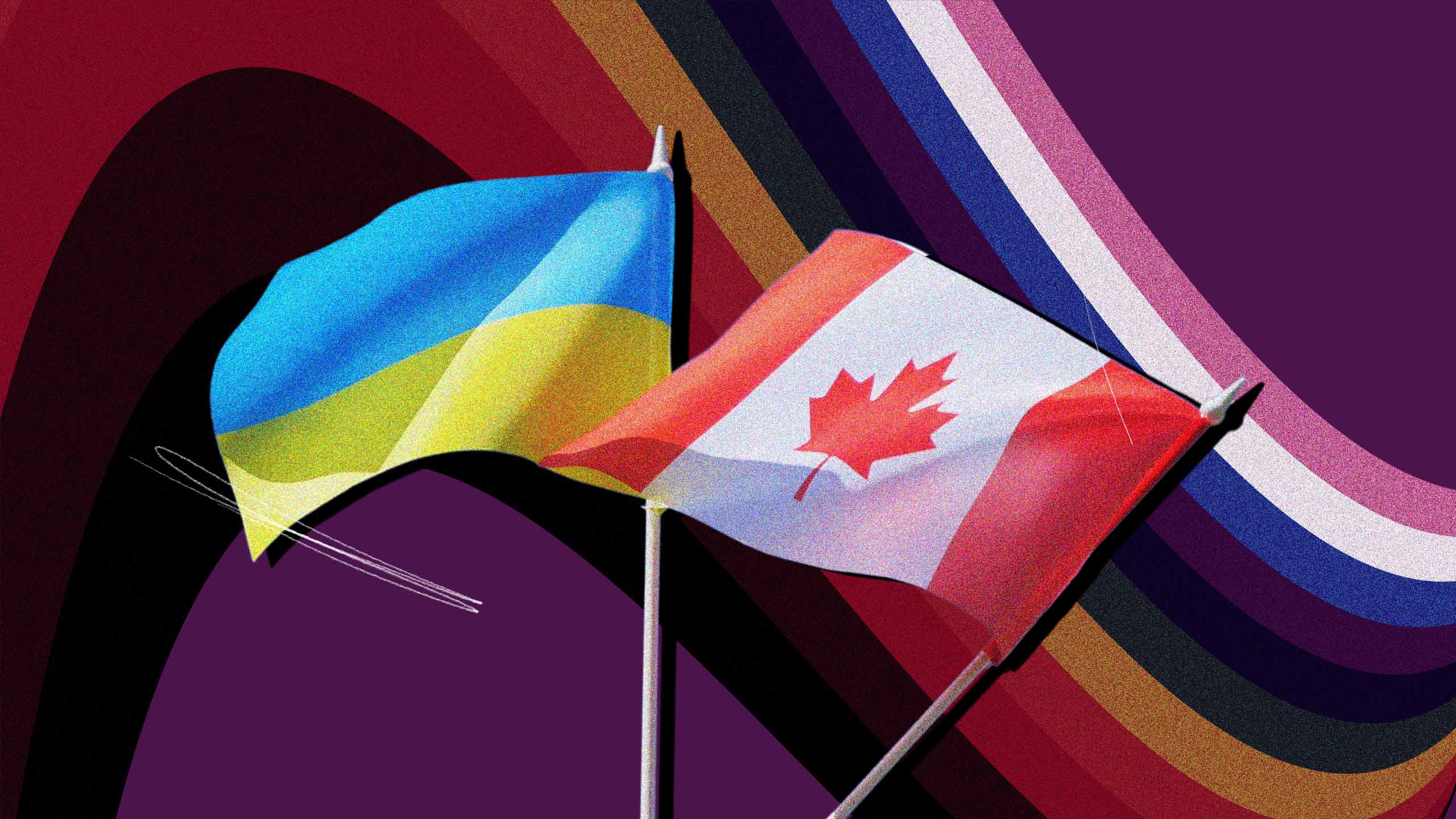Last month, I had a conversation with Lenny Emson of Transgender Europe and formerly of Kyiv Pride. Following it, I decided to look into what Canada was currently doing to support LGBTQ+ communities in Ukraine in order to see if it included any of the things that Emson pointed out. This in turn can help us to determine if the Canadian government is listening to or understands the needs of queer and trans Ukrainians, or if they’re simply using a generic response to those who are in some of the greatest need, as homophobia and transphobia are being carried out by a tired and scared population who feel like they need to put the most vulnerable in their place, and because they are internalizing Russian propaganda whether they realize it or not.
Unfortunately, what I learned was pretty vague. Global Affairs Canada’s response was not very detailed (once you got past the boilerplate language about their feminist foreign policy) and my request to speak to either the current or former Canadian ambassador to Ukraine was not granted, in spite of giving them a very generous deadline.
What Global Affairs Canada told me, minus the boilerplate, was thus:
With Canadian funding, development partners have collaborated with sub-grantees who are supporting LGBTQI+ communities in Ukraine, including producing media content highlighting the stories and experiences of LGBTQI+ people in the war; providing LGBTQI+-focused psychosocial support; and supporting a human rights clinic that helps protect the rights of members of the LGBTQI+ community through legal assistance and support to displaced LGBTQI+ individuals.
Additionally, Canada provided close to $300,000 to partners supporting the development of an e-curriculum for police academies in Ukraine to promote a human rights approach to policing. They also trained police investigators on inclusive policing with a focus on hate crime investigation as it relates to challenges of bias-motivated crimes of homophobia and transphobia directed against LGBTQI+ populations in Ukraine. Following the full-scale invasion by Russia, Canada’s partners provided direct support to LGBTQI+ communities in Ukraine by helping reallocate and facilitate access to safe spaces and shelters, as well as psychosocial support for those in need. Finally, between 2019 and 2021, the Canada Fund for Local Initiatives (CFLI) program supported four initiatives to promote LGBTQI+ rights in Ukraine through various activities such as media campaigns, psychological counselling and skills training.
Professor Stephen Brown at the University of Ottawa specializes in foreign aid and LGBTQ+ rights abroad. I showed him GAC’s response, and like me, he was left with more questions than answers about just what it was Canada was doing, but noted the language around “sub-grantees,” meaning these would be part of an existing external program that the government funds, such as human rights group Equitas’ Act Together for Inclusion Fund (ACTIF), which supports LGBTQ+ organizations around the world.
“There are no numbers attached to this,” Brown says. “When it comes to producing media content, did they give $1,000 to that, or $10,000? Who knows? Giving psychosocial support—again, is this one counsellor available a few hours a week, or a full-time position, or multiple or is this a hotline? Who knows?”
Brown also points to the human rights clinic, which doesn’t appear to be specifically LGBTQ+ focused, or it would have stated so, we both presume, but there is no way of knowing what percentage of their clientele is queer or trans, or how much spending is going into it.
“It could be that because these are sub-grantees, that GAC doesn’t know exactly what they’re doing, which is fine, because we don’t want them to be bogged down with reporting every single thing—we want them to just do good work,” Brown says.
Where there is one set of figures, the $300,000 for the development of e-curriculum for police academies in Ukraine, it again remains vague as to what exactly this entails, whether this is one-day training, multi-day training that merely mentions LGBTQ+ communities as part of a broader human rights scope, for example.
The one mention that is most interesting to me is the Canada Fund for Local Initiatives. These are funds that are specific to Canadian embassies and missions abroad, and have a wide discretion for local needs, but because these funds are discretionary, the reporting is not always clear.
Employment minister Randy Boissonnault frequently talks about how this fund was used in Ecuador to great success in helping queer and trans refugees fleeing Venezuela, which grew into an organization that now spans four countries in the region.
In this case, the CFLI in Ukraine says that they “supported four initiatives to promote LGBTQI+ rights in Ukraine through various activities such as media campaigns, psychological counselling and skills training.” I heard from someone familiar with the situation on background, but not for attribution that Canada’s embassy in Ukraine is one of the most involved in doing work with the queer and trans communities, relative to other embassies, which is encouraging, but the official description remains vague with no numbers attached.
“The problem isn’t that they’re not doing good things or that they’re not doing enough—it’s that they’re not telling us what they’re doing,” Brown says. “Maybe certain organizations don’t want to know that they’re getting Canadian support for their activities, and it could be at their request that their name is not revealed.”
The problem is that we don’t know if they have requested for their names to not be revealed, which adds to the vagueness of the reply. What I learned from GAC also doesn’t seem to be doing what Emson says that they need on the ground, which is identifying communities in need and coming up with a plan for things like capacity-building. Brown says that ideally Canada wouldn’t be doing this work alone, but in partnership with other countries so that we’re not duplicating efforts and better sharing the workload, which also raises the question again from the GAC response to know how much we are working with other countries in this particular situation. We also have no idea from the response whether Canadian officials on the ground are doing any work with either ILGA Europe or Transgender Europe, but it doesn’t seem very likely.
While it was encouraging to hear from the official on background that our embassy is one of the leaders on the ground in engaging with queer and trans communities, particularly in using their CFLI for these four projects, it would have been nice if the departmental officials could have provided more information on just how Canada is currently able to help those communities, and a sense of what more they feel they need to do. This is a communications problem with our government, and also shows why we need an LGBTQ+ Special Envoy who can help to coordinate this within GAC, and hopefully better demonstrate to the public just what Canada is doing on the ground for queer and trans people in countries like Ukraine. If this government wants us to believe that they’re really doing enough to help LGBTQ+ people in Ukraine, they need to do a better job of showing us their homework.


 Why you can trust Xtra
Why you can trust Xtra


